The fabled mansions of Storyville were mainly clustered along or near Basin Street, facing the Southern Railway line, which terminated at the station on Canal Street. Many of the structures existed prior to the working-class neighborhood’s designation as a vice district, but a few were specially built to be among the most lavish bordellos in the country. The Arlington, Mahogany Hall, and the Star Mansion, among others, were touted as the most costly and elaborately furnished establishments anywhere. Away from Basin Street, the District also contained numerous “cribs,” crude one- or two-room structures, or larger buildings partitioned into small spaces, where women worked in shifts under terrible conditions.
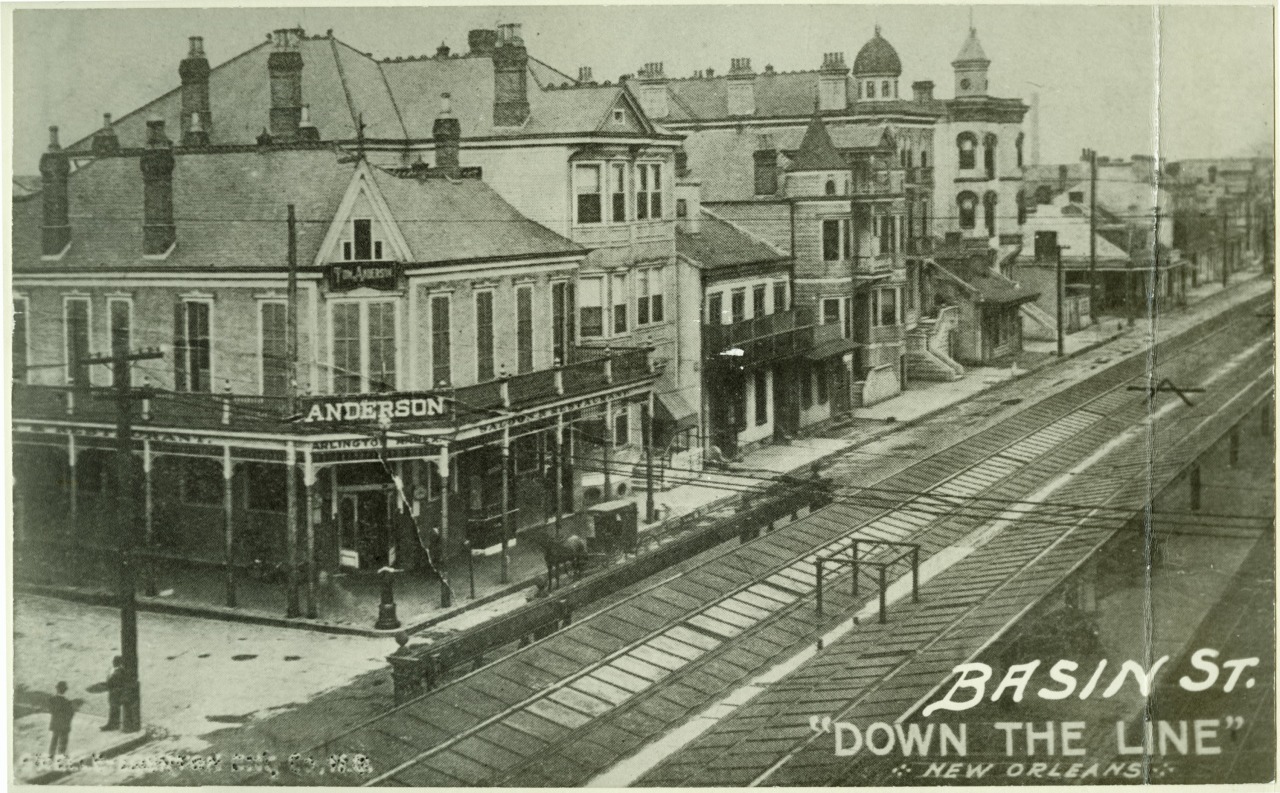
View of Basin Street
ca. 1908; gelatin silver print
The Historic New Orleans Collection, gift of Albert Louis Lieutaud, 1957.101
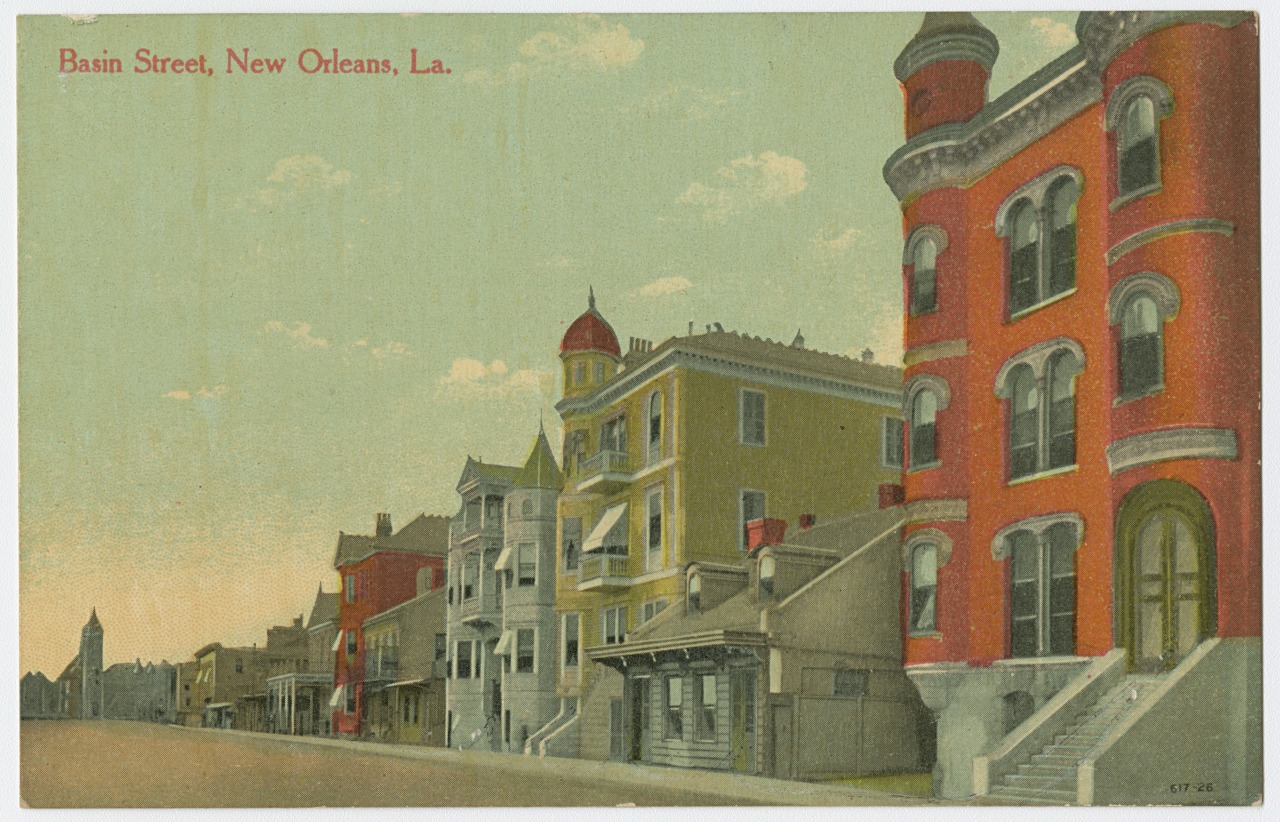
Postcard showing view of Basin Street
ca. 1915
The Historic New Orleans Collection, The William Russell Jazz Collection, acquisition made possible by the Clarisse Claiborne Grima Fund, MSS 536, 92-48-L.258
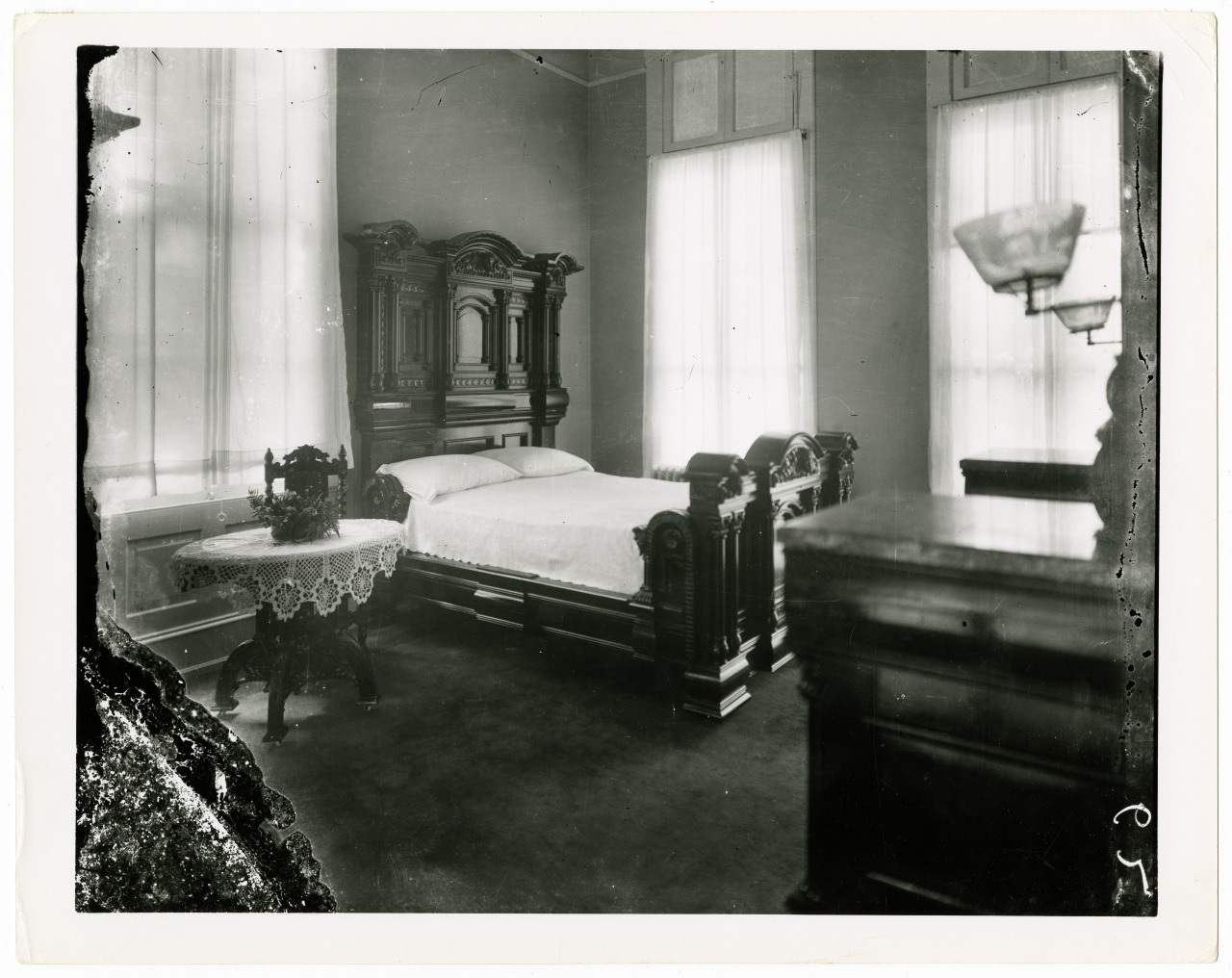
Storyville interior, 341 N. Basin Street
negative, ca. 1905; gelatin silver print, between 1953 and 1958
by Ernest J. Bellocq, photographer; unknown photographic printer
The Historic New Orleans Collection, 1981.177.20The brothel shown in this photograph overlooked St. Louis Cemetery No. 1. Eunice Deering is listed in the 1905 Blue Book as madam of this establishment. By the publication of the final edition of the guidebook (between 1913 and 1915), W. O. Barrera was the brothel’s madam.
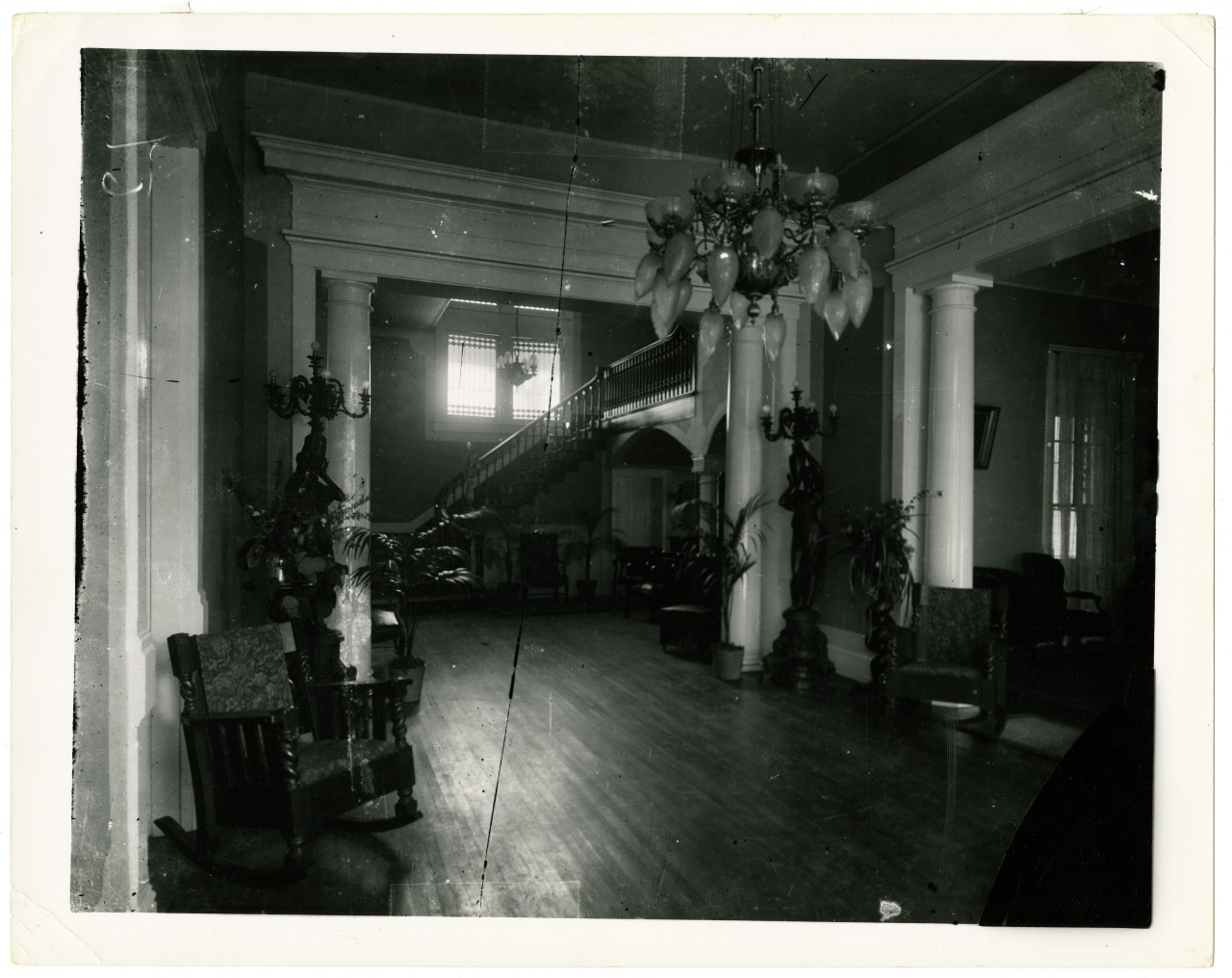
Storyville interior
negative, ca. 1905; gelatin silver print, between 1953 and 1958
by Ernest J. Bellocq, photographer; unknown photographic printer
The Historic New Orleans Collection, 1981.177.22The brothel featured in this photograph has not been identified. It is likely Mahogany Hall at 235 N. Basin, the Arlington at 225 N. Basin, or the mansion at 209 N. Basin, which was managed by three different madams in the Storyville years: Flo Meeker, Hilma Burt, and Gertrude Dix.
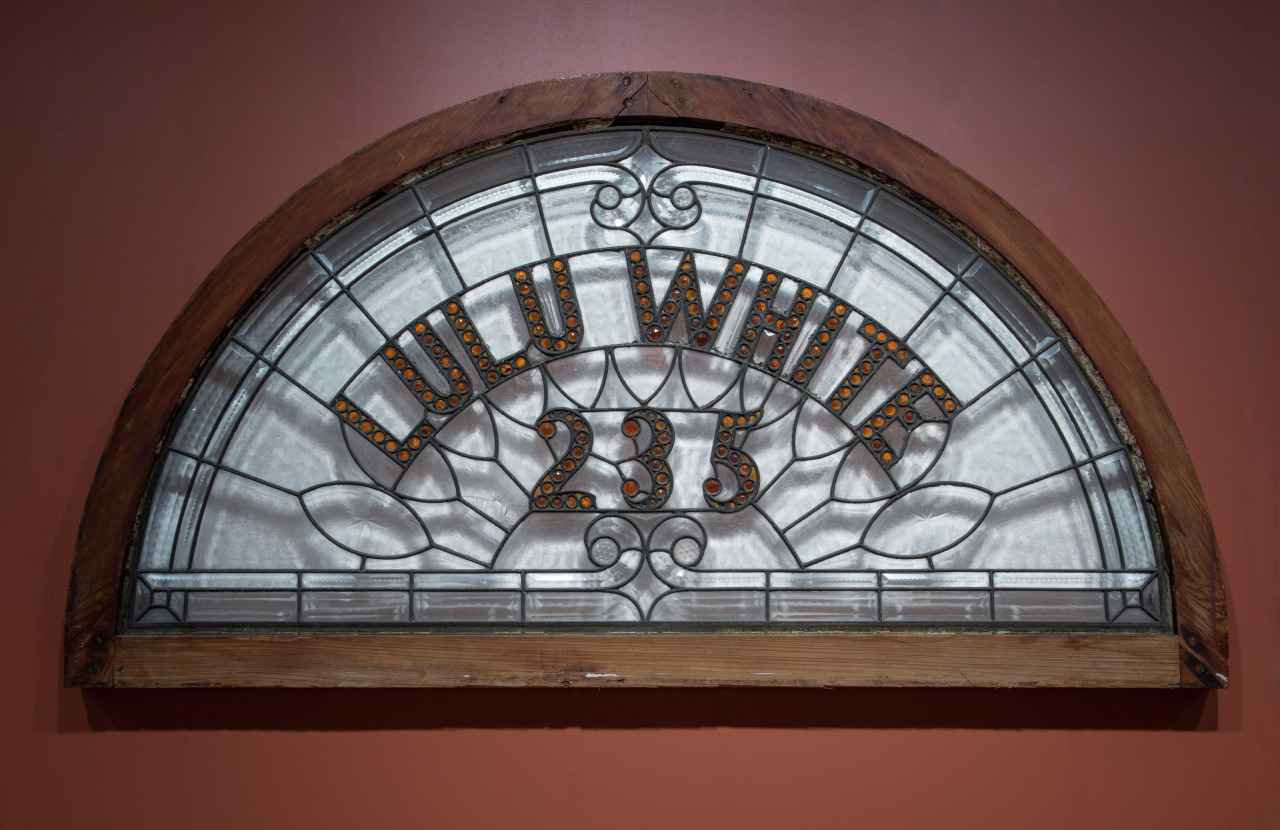
Transom from Mahogany Hall
ca. 1898; wood, lead, clear beveled and patterned glass, clear and amber glass jewels
The Historic New Orleans Collection, acquisition made possible by the Laussat Society, 2017.0020

Mirror panel from the Arlington’s music room
ca. 1900; glass, lead, silver
The Historic New Orleans Collection, 2015.0204

Music room in the Arlington
from Blue Book
New Orleans, [1908]
The Historic New Orleans Collection, 1969.19.9
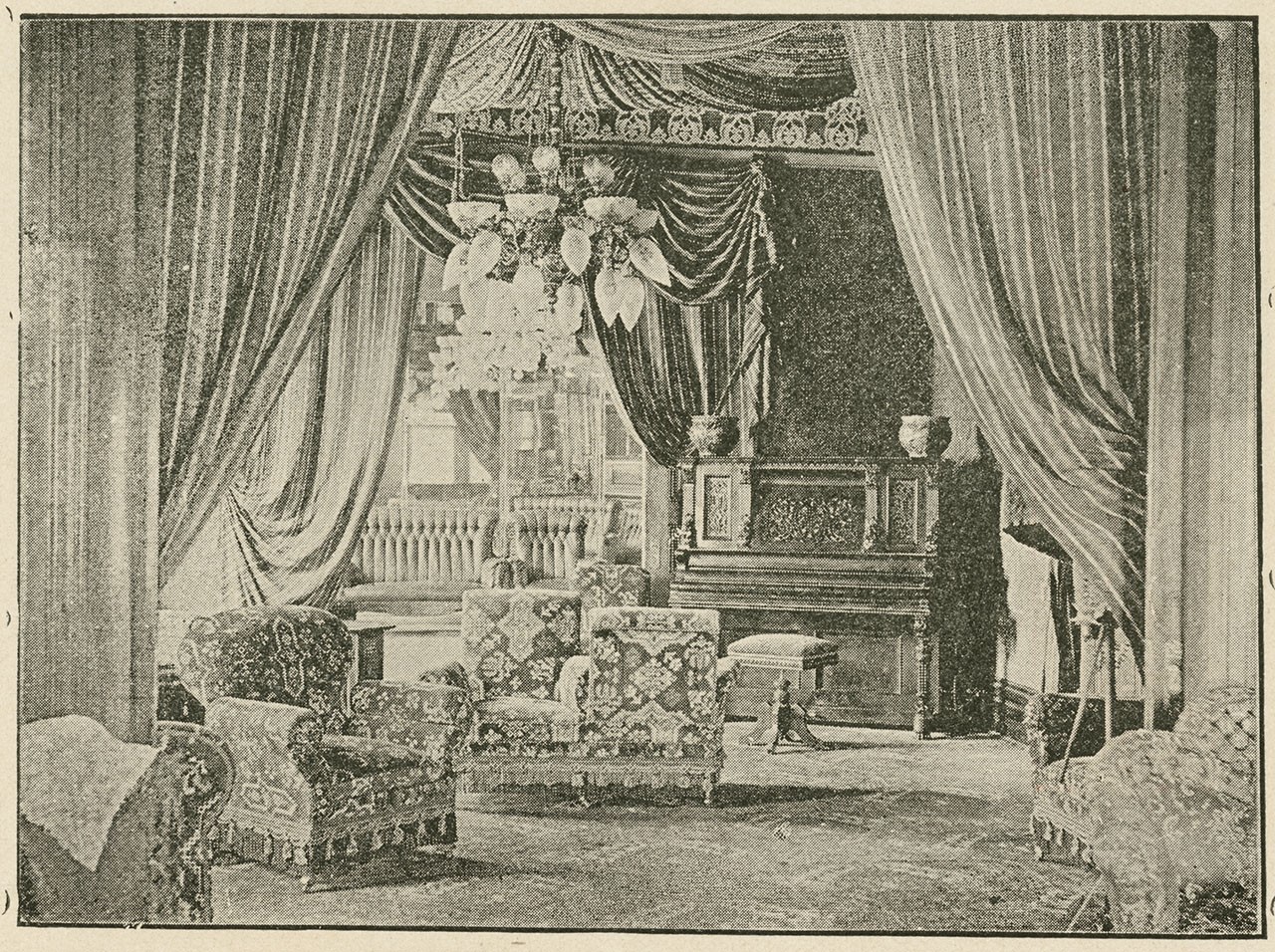
Vienna parlor in the Arlington
from Blue Book
New Orleans, [1908]
The Historic New Orleans Collection, 1969.19.9
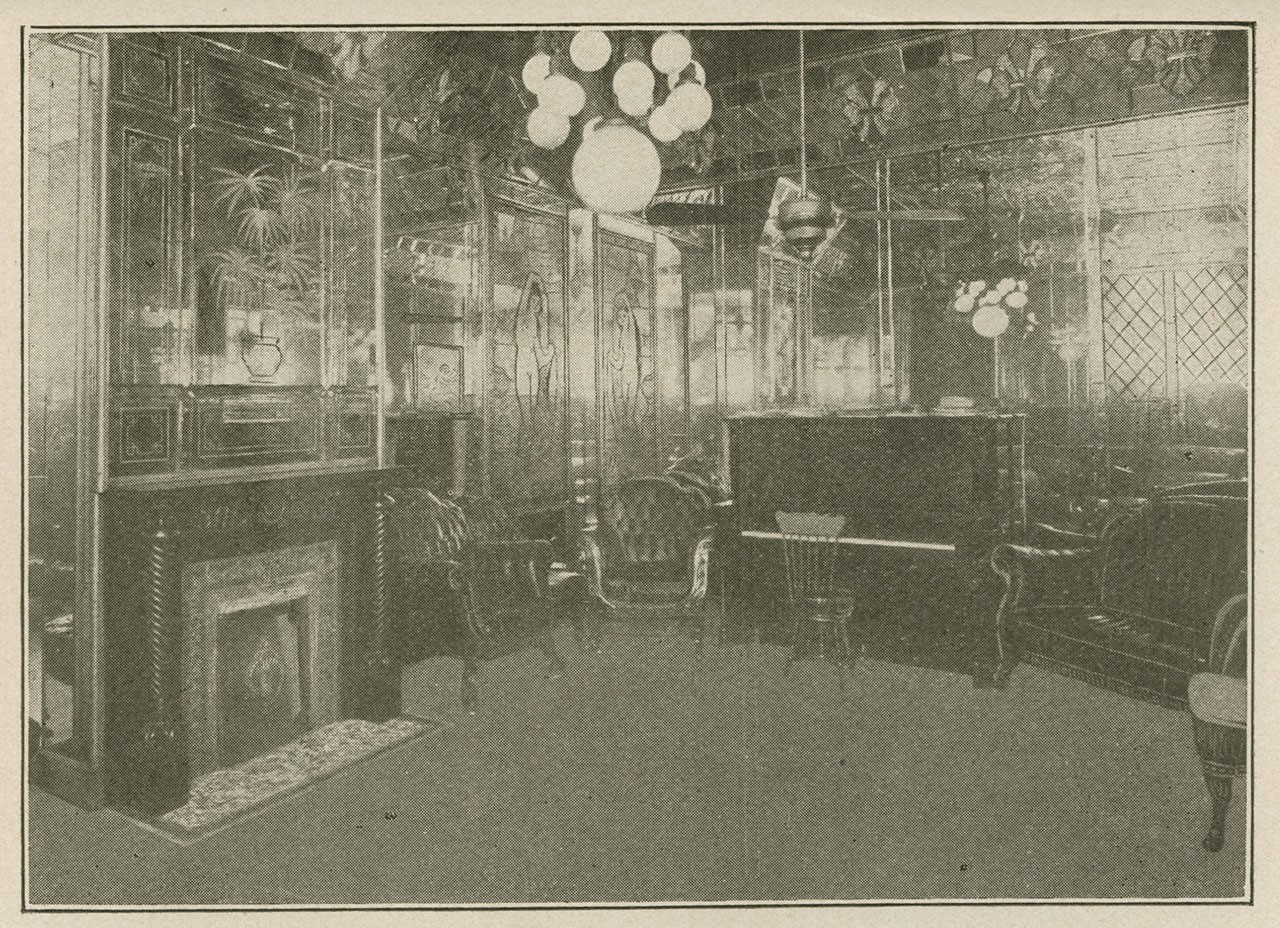
Music room in Hilma Burt’s brothel
from Blue Book
New Orleans, [1908]
The Historic New Orleans Collection, 1969.19.10
